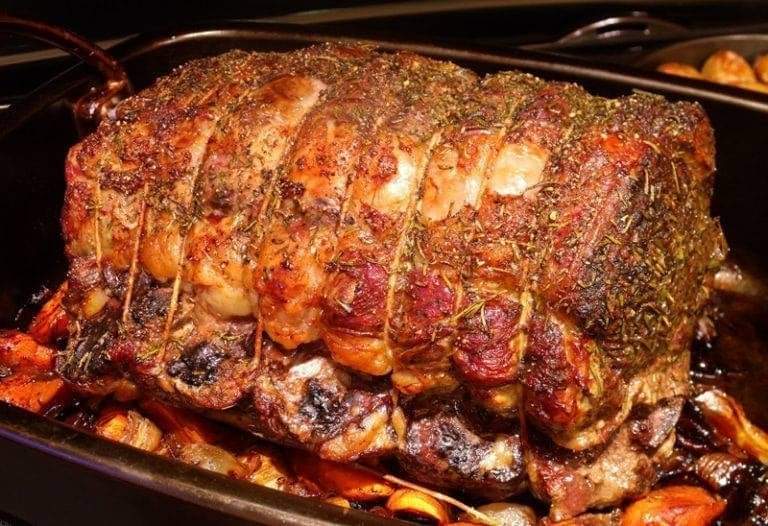Prime rib, also known as standing rib roast, is a popular and flavorful cut of beef that has several health and nutritional benefits. Here are some of the benefits associated with prime rib:
1. High Protein Content: Prime rib is a rich source of high-quality protein. Protein is essential for the growth, repair, and maintenance of tissues in the body. It also helps in the production of enzymes, hormones, and antibodies.
2. Vitamins and Minerals: Prime rib contains various vitamins and minerals that are important for overall health. It is particularly rich in B vitamins, including vitamin B12, which is crucial for red blood cell formation and neurological function. It also provides essential minerals like iron, zinc, selenium, and phosphorus.
3. Iron: Prime rib is a good source of iron, a mineral necessary for the production of hemoglobin, which carries oxygen throughout the body. Consuming iron-rich foods like prime rib can help prevent iron-deficiency anemia.
4. High-Quality Fats: While prime rib does contain fat, a significant portion of it is monounsaturated fat, which is considered a healthy fat. Monounsaturated fats can help lower bad cholesterol levels, reduce the risk of heart disease, and provide energy.
5. Collagen and Gelatin: Prime rib contains collagen and gelatin, which are beneficial for joint health and skin elasticity. Collagen and gelatin are derived from the connective tissues in the meat and can support healthy joints, bones, and skin.
It’s important to note that while prime rib has several nutritional benefits, it is also a high-calorie and high-fat food. Moderation and balance are key when incorporating prime rib into a well-rounded diet. Additionally, cooking methods and seasonings can affect the overall nutritional profile of the dish, so it’s important to consider the preparation techniques as well.
Prime Rib

Instructions:
First I take a 5 pound prime rib then I have it sliced in the middle then use butcher twine to tie it back together then I take butter (soft) and I mix garlic salt with some tyme and mix really well.
Spread your butter all over the prime rib then add some Italian seasonings on the outside with some kosher salt. Making sure your meat is at room temp before cooking… Very important.
Put your oven on 500 and cook 5 mins per pound. Hoping you have a meat probe you can use while it’s cooking.
Then after 25 mins or so bring oven down to 200 for around 2 to 3 hours maybe even longer until the meat reaches an internal temp of around 140 or so. then take out and let rest for about 15 to 20 mins before slicing.
Should be rare and thats how prime rib should be served.
Cooking prime rib to perfection requires careful attention to detail. Here are some tips to help you achieve a delicious prime rib:

1. Choosing the Cut: Select a high-quality prime rib roast from a trusted butcher or grocery store. Look for well-marbled meat with a good layer of fat, as this will contribute to flavor and juiciness.
2. Seasoning: Season the prime rib generously with salt and pepper or your preferred seasoning blend. You can also add herbs like rosemary, thyme, or garlic for additional flavor. Let the meat sit at room temperature for about 30 minutes before cooking to allow the seasoning to penetrate.
3. Preheating: Preheat your oven to a high temperature, usually around 450°F (232°C). This initial high heat will sear the meat, creating a flavorful crust.
4. Roasting: Place the prime rib on a rack in a roasting pan, fat side up. Insert a meat thermometer into the thickest part of the roast, making sure it doesn’t touch the bone. Cook at the high temperature for about 15 minutes to sear the meat, then reduce the heat to around 325°F (163°C) for the remainder of the cooking time.
5. Cooking Time: The cooking time will depend on the size of your prime rib and the desired level of doneness. As a general guideline, allow approximately 15 minutes of cooking time per pound of meat for medium-rare. Use a meat thermometer to check for the desired internal temperature. For medium-rare, aim for about 135°F (57°C). Remember that the temperature will rise a few degrees during resting.
6. Resting: Once the prime rib reaches the desired temperature, remove it from the oven and tent it loosely with foil. Let it rest for about 15-20 minutes before slicing. Resting allows the juices to redistribute and results in a more tender and juicy roast.
7. Slicing: Slice the prime rib against the grain into desired thickness. This helps to ensure tender and easier-to-chew slices.
8. Au Jus and Horseradish Sauce: Serve the prime rib with flavorful au jus, which is the natural juices from the roast, and horseradish sauce for added taste. You can make the au jus by deglazing the roasting pan with beef broth or red wine and reducing it on the stovetop.
Remember, these tips are general guidelines, and cooking times may vary depending on the size of the roast and individual preferences. It’s always a good idea to use a meat thermometer to ensure the roast is cooked to your desired level of doneness.